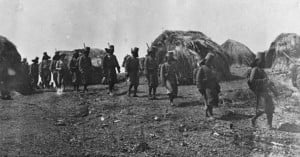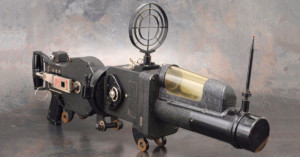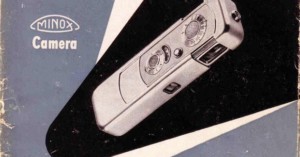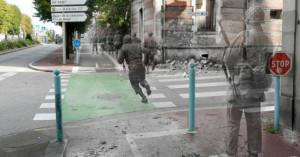
US Reconnaissance Photos Taken During World War II Revealed
A collection of 3,600 aerial photographs taken by the United States Army Air Forces (USAAF) is being shown publically for the first time.

A collection of 3,600 aerial photographs taken by the United States Army Air Forces (USAAF) is being shown publically for the first time.

Archeologists using a drone equipped with high-resolution LiDAR have revealed thousands of previously unknown details from the U.S.' largest and bloodiest World War II battle.

When Dorothy Bohm was saying goodbye to her family as she was fleeing the Nazis, her father passed her his Leica camera saying: “You might need this.”

Newly discovered photos show the horror of Kristallnacht when Nazi thugs destroyed the businesses of Jewish people and started the events that would lead to the Holocaust.

Tsukasa Yajima's photographs of comfort women, girls forced into sexual slavery by the Imperial Japanese Army, underline the importance of remembering atrocities of the past.

A photographer is appealing for information after he discovered a lost roll of film inside a Kodak Brownie that contained "special" photos of a U.S. Navy soldier thought to be from the World War II period.

A new documentary explores the secret and unauthorized photographs that concentration camp prisoners clandestinely took during the Second World War.

A war in Europe instantly creates parallels with the world wars for people in the UK and other European countries. This connection represents what most people know and are taught about conflict on the continent.

The Leica Freedom Train was not a physical coal or steam engine, but the monumental effort of the Leitz family. This is how they and the Leica camera company saved hundreds of Jews from persecution at the hands of the Nazis.

You didn’t ask to learn about bellows extension factors, but we're going to cover it with the most absurd camera that you may ever see!

During World War II, the US Air Force used massive cameras to capture aerial photographs for the purposes of mapping and reconnaissance. The resulting photographs provide a fascinating look into what the war looked like for those who fought it from above.

Check out this absolute unit of a camera that was used to do aerial photography during World War II. Mounted on the front of the camera is a massive 2-foot long 610mm f/6 lens.

In the spirit of spreading some much-needed good news, the Associated Press recently revealed that Tony Vaccaro—the famed World War II photographer whose professional career spanned almost 80 years and 500,000 images—caught and survived coronavirus at the ripe old age of 97-years-old.

A Japanese "machine gun" camera has popped on eBay. The camera, which was used in war-time during the World War II era, can be yours for a price of $4,499.

Have you ever wondered what World War II was like? Last month I got a little closer.

Photographer Levi Bettweiser is the man behind the Rescued Film Project, an effort to find and rescue old and undeveloped rolls of film from the far corners of the world.
He recently came across one of his biggest finds so far: 31 undeveloped rolls of film shot by a single soldier during World War II.

Rosie the Riveter was more than a cultural World War II icon. To many women at the time, Rosie the Riveter was a person, an idea they aspired to while their husbands, brothers and fathers were overseas, fighting day in and day out.

In 1938, after many prototypes, the first 8x11mm subminiature camera was brought to market by German inventor Walter Zapp. It was called the Minox Riga, and the tiny camera actually saw espionage action in both WWII and the Cold War.

Originally produced for the US military in WW2, the Kodak Aero Ektar 178mm f/2.5 is a large-format monster of a lens. Mounted in bombers, facing down at Europe, this lens was sold to the US government for the price of a family car. It found its way into military surplus after the war, and was widely used in journalism and by professional photographers.

Dutch historian Jo Teeuwisse is back with another fascinating then-and-now project (we featured her work once back in 2010), this time titled Ghosts of War--France. The images show old World War II photographs of soldiers blended seamlessly into photos of the same locations in modern day France.

Back in the summer of 1942, the US Army called upon a young man named Glenn W. Eve (above left) for World War II. After finding him to be 5'9'' and just 125 pounds, the military deemed him unfit for combat. Unlike Steve Rogers, there was no experimental serum available to Eve, but luckily he had a desired skill: photography. In 1944, Eve was promoted to private first class and placed in the Signal Photo Corps in order to document the happenings in the Pacific.

After collecting old World War 2 photographs taken in major European cities, Russian photographer Sergey Larenkov spent a year traveling around Europe to re-photograph the same scenes as they look today. He then carefully combined the old images with the new ones to create photographs that show two views of the same location captured over 60 years apart.